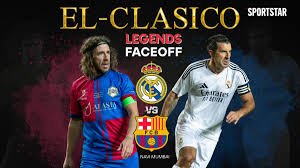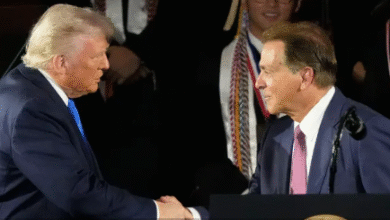The Musk Ecosystem: How Elon Musk’s Empire is Finally Converging in 2025
For years, the world has viewed Elon Musk through the lens of his individual companies: Tesla the automaker, SpaceX the rocket company, and X the chaotic public square. But to analyze his influence in 2025 is to witness a profound shift. This is no longer a portfolio of separate, ambitious ventures; it is the year of convergence. This is the year the “Musk Ecosystem” comes into focus, a vertically integrated reality where each company feeds the others, aimed at nothing less than rewriting the rules of transportation, communication, energy, and human consciousness.
As we stand in mid-2025, the promises that once sounded like science fiction are now tangible, disruptive realities. The Cybertruck populates highways, Starship routinely reaches for orbit, and AI bearing Musk’s signature is integrated into the products millions use daily. This is the moment where the master plan, once a subject of speculation, is finally visible, revealing an interconnected empire poised to define the next decade.
X: The Central Nervous System of the Ecosystem
The transformation of Twitter into X was perhaps Musk’s most controversial move, but in 2025 its strategic importance is undeniable. X is being forged into the central nervous system of the Musk empire—the “everything app” that serves as the primary interface between his vision and the public.
-
From Town Square to Digital Marketplace: X has moved aggressively beyond being a simple social network. The integration of payment services is well underway, with the goal of turning the platform into a comprehensive peer-to-peer financial system. The vision is clear: create a high-velocity, low-friction economy where creators can monetize content and users can transact seamlessly, all within one application.
-
Grok AI Integration: The masterstroke for X has been its deep integration with Grok, the flagship AI from Musk’s xAI venture. Grok is not just another chatbot; it’s a real-time, unfiltered AI designed to understand the world through X’s firehose of data. It powers search, summarizes complex discussions, and provides a conversational interface for the platform, making X an essential tool for real-time information synthesis. This synergy provides xAI with an unparalleled training ground and gives X a feature its competitors cannot replicate.
Tesla: The Transition from EV Maker to AI Robotics Leader
For years, Tesla’s identity was tied to electric vehicles. In 2025, that definition feels profoundly outdated. While still a dominant force in the EV market, Tesla’s true focus is now overtly on autonomy and robotics, positioning it as an AI company that happens to build cars.
-
The Cybertruck Era and FSD’s Moment of Truth: The angular, stainless-steel Cybertruck is no longer a rare sight. The production ramp-up has been a monumental industrial challenge, but its presence on the roads solidifies Tesla’s brand as a creator of category-defining products. More importantly, every new Tesla vehicle is a node in the network collecting data for Full Self-Driving (FSD). By 2025, FSD has reached a new level of maturity, navigating complex urban environments with increasing confidence. While true Level 5 autonomy remains the holy grail, the progress is tangible, and the data advantage Tesla holds is arguably insurmountable.
-
Optimus Takes a Step Forward: The Optimus humanoid robot, once dismissed as a publicity stunt, has become a serious focus within Tesla. While not yet deployed in factories en masse, advanced prototypes are now capable of performing complex sorting and assembly tasks. Musk’s argument is that the technology underpinning FSD—computer vision, neural networks, real-world navigation—is directly transferable to a humanoid robot. This positions Tesla not just to revolutionize manufacturing, but to potentially create the world’s first mass-market AI-powered labor force.
SpaceX: The Bridge to the Stars and the Backbone of Global Connectivity
SpaceX continues to operate with breathtaking speed and efficiency, solidifying its near-monopoly on global launch services. However, its mission in 2025 is twofold: making humanity multi-planetary and providing the internet connectivity for Earth.
-
Starship’s Regular Cadence: The awe-inspiring Starship is the centerpiece of Musk’s long-term vision. By mid-2025, the vehicle has achieved a regular launch cadence from its Starbase in Texas, successfully delivering larger, more capable Starlink satellites to orbit and executing orbital refueling tests. Each successful flight makes the prospect of a self-sustaining city on Mars feel less like a dream and more like an engineering timeline. Starship is the key that unlocks the next phase of space exploration and commercialization.
-
Starlink’s Global Dominance: The Starlink satellite internet constellation now provides high-speed connectivity to millions in the most remote corners of the globe. It is a highly profitable and strategically vital asset. It provides a dedicated, secure communications network for governments and corporations, and it offers the potential to become the default internet service provider for the entire transportation industry—from airplanes and ships to every Tesla vehicle on the road, further binding the ecosystem together.
The Deep Future: xAI and Neuralink
If Tesla, X, and SpaceX are building Musk’s present-day empire, xAI and Neuralink are building its deep future.
-
xAI’s Quest for Truth: Positioned as a direct competitor to OpenAI and Google, xAI’s mission is to develop a “maximally curious” and “truth-seeking” Artificial General Intelligence (AGI). Its deep integration with X and Tesla provides it with the real-world data it needs to grow. Musk’s stated goal is to create a safe AGI that serves as a counterweight to what he perceives as the politically biased and potentially dangerous AI developed by his rivals.
-
Neuralink: The Human-AI Interface: Neuralink has moved from animal trials to its first human subjects, marking a historic moment in the field of brain-computer interfaces (BCIs). While initial applications are focused on restoring motor function to paralyzed individuals, the long-term vision remains unchanged: to create a high-bandwidth interface between the human brain and computers. For Musk, this is the ultimate solution to the “AI alignment problem”—if we can merge with AI, we cannot be left behind by it.
Conclusion: The Architect of a Unified Reality
In 2025, Elon Musk is no longer just a CEO of individual companies. He is the architect of a unified system. His electric cars are powered by Tesla Energy and connected by Starlink. His X platform is powered by Grok AI, which is trained on data from a world connected by Starlink. The entire terrestrial operation is a stepping stone to fund Starship, the vehicle for his ultimate goal of making life multi-planetary.




